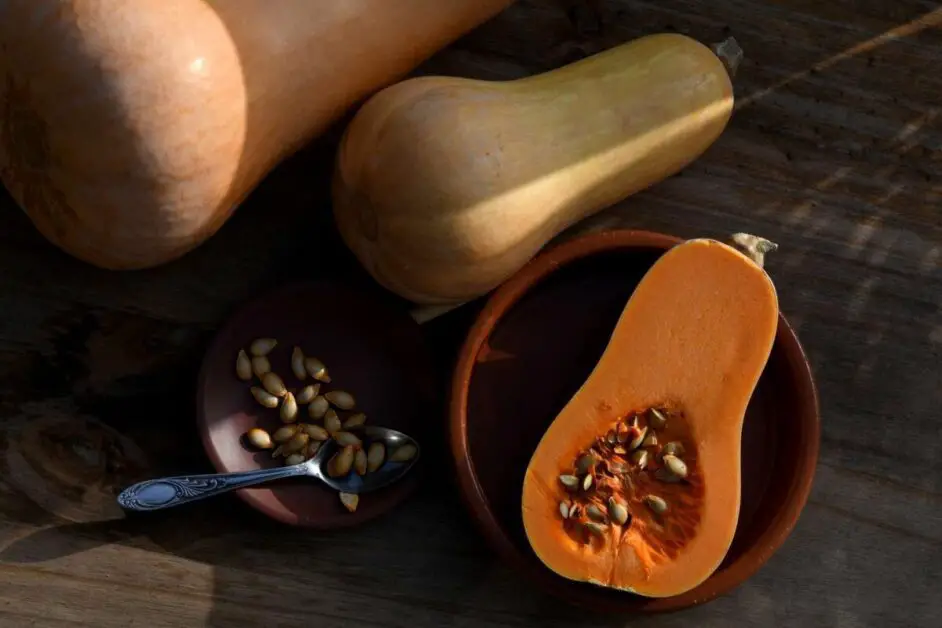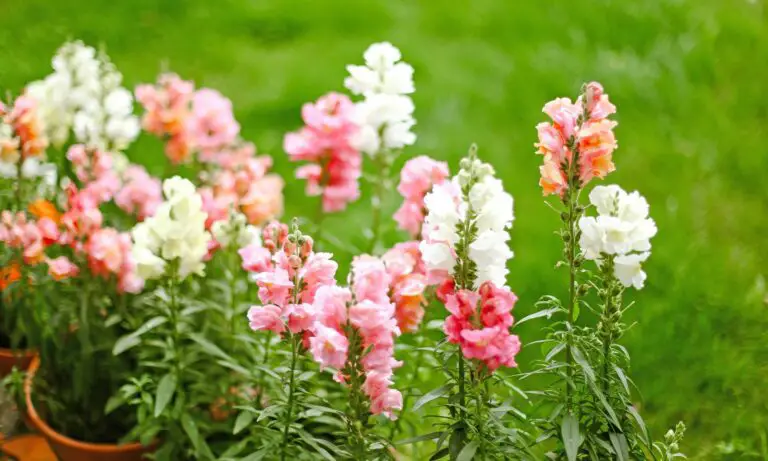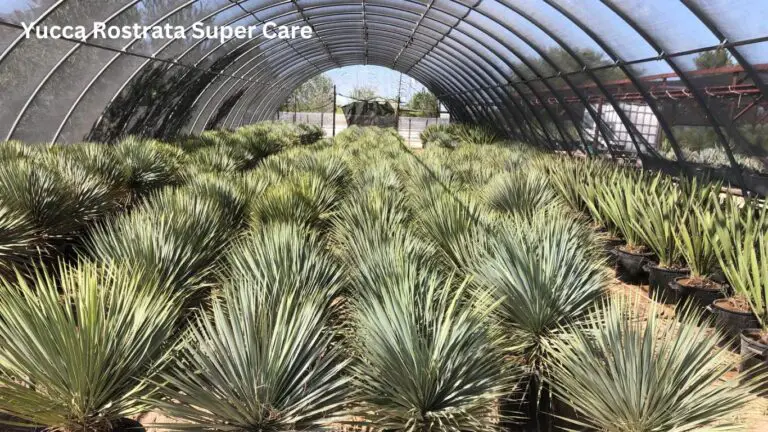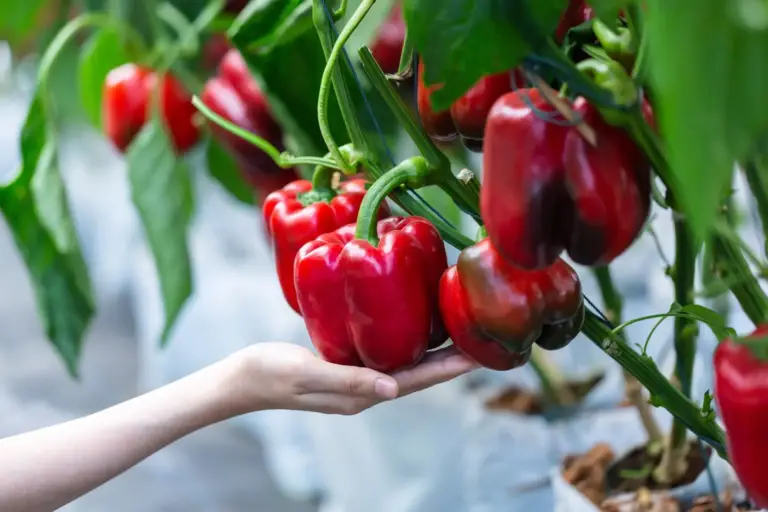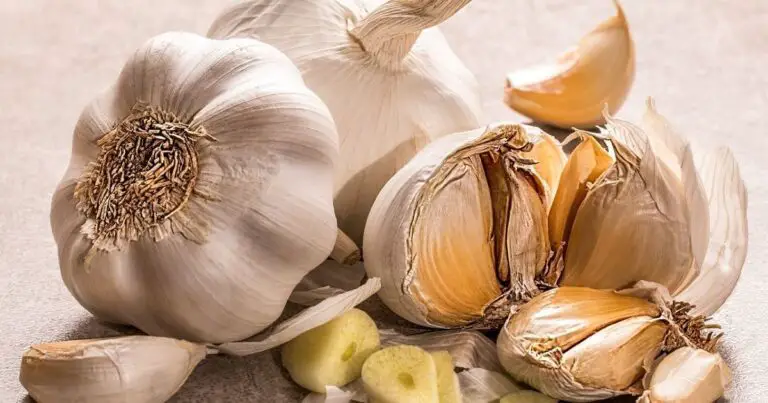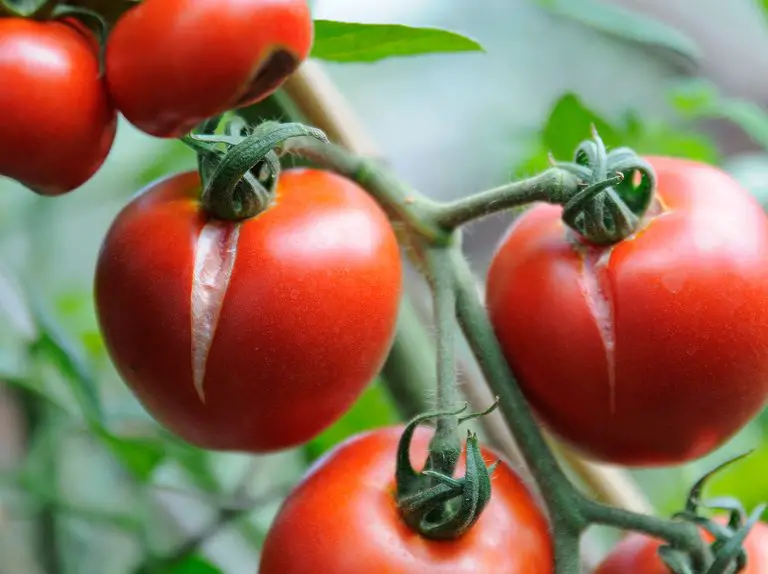Growing Butternut Squash: A Fall Favorite
Selecting the Right Butternut Squash Variety for Your Garden
When it comes to growing butternut squash, choosing the right variety is essential for a successful harvest. There are several different types of butternut squash available, each with its own unique characteristics and flavor profiles. The most common variety is the Waltham Butternut, known for its sweet and nutty taste, as well as its excellent storage capabilities. If you’re looking for a smaller option, the Butterbush variety is compact and perfect for small gardens or containers. For those seeking a more unique squash, the Violina rugosa variety offers a distinct, ribbed texture and an earthy flavor. Whichever variety you choose, be sure to consider your garden’s climate, soil conditions, and the space available for the plants to thrive.
Understanding the Ideal Climate and Soil Conditions for Butternut Squash
Butternut squash is a warm-season crop, requiring a long growing season and plenty of sunlight to flourish. It thrives in areas with a minimum average temperature of 50°F, making it ideal for fall gardening. When it comes to soil conditions, butternut squash prefers well-draining soil with a pH level between 6.0 and 6.8. Prior to planting, it’s crucial to prepare the soil by incorporating organic matter such as compost or aged manure to improve fertility and drainage. Additionally, ensuring adequate spacing between plants and providing a trellis or support system for the vines can help optimize air circulation and prevent diseases. By understanding these climate and soil requirements, you can create the ideal environment for your butternut squash to thrive and yield a bountiful harvest.
Selecting the Right Butternut Squash Variety for Your Garden
When selecting the right butternut squash variety for your garden, there are several factors to consider. First and foremost, you’ll want to choose a variety that is well-suited to your specific climate and growing conditions. Different varieties have different temperature and moisture requirements, so it’s important to choose one that will thrive in your area.
Another important consideration is the size and shape of the butternut squash. Some varieties are known for their compact size and uniform shape, making them ideal for small gardens or containers. Others may produce larger fruits, which can be great if you have ample space and a desire for big, bountiful harvests.
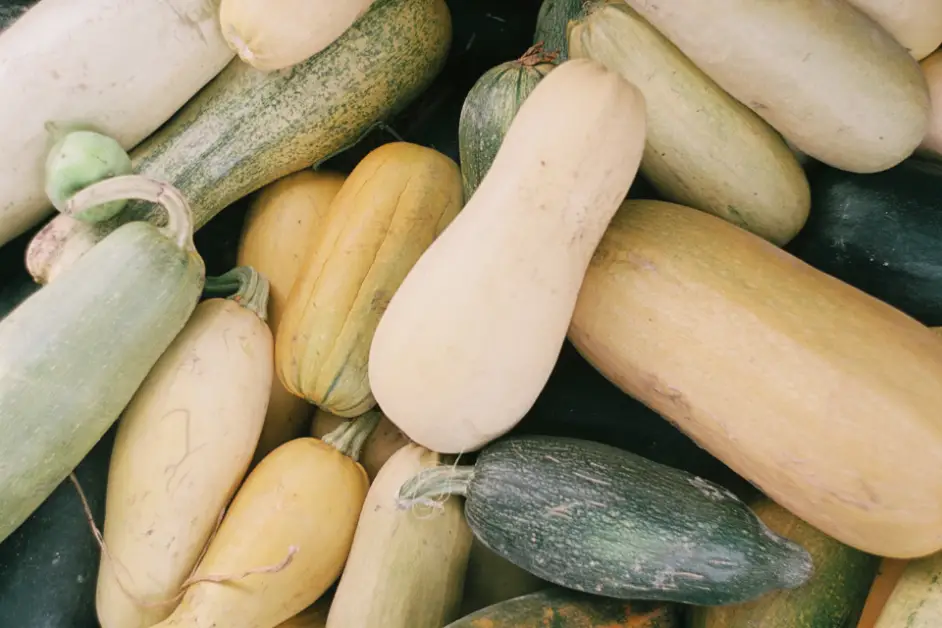
In addition, take note of the ripening time of different varieties. Some butternut squash varieties mature faster than others, which might be advantageous if you have a shorter growing season. On the other hand, if you have a longer season, you may opt for a variety with a longer maturation period to extend your harvest.
Overall, the key to selecting the right butternut squash variety for your garden is to consider your specific climate, available space, and desired harvest time. By choosing a variety that aligns with these factors, you’ll set yourself up for success and enjoy a plentiful harvest of delicious butternut squash. Stay tuned for our next section where we delve into understanding the ideal climate and soil conditions for butternut squash.
Understanding the Ideal Climate and Soil Conditions for Butternut Squash
Butternut squash is a popular cultivar known for its delicious flavor and versatility in the kitchen. To successfully grow this fall favorite, it is crucial to understand the ideal climate and soil conditions that promote its growth and development.
Butternut squash thrives best in regions with a long growing season and warm temperatures. Ideally, the temperature range should be between 70 to 90 degrees Fahrenheit (21 to 32 degrees Celsius) during the day and not drop below 50 degrees Fahrenheit (10 degrees Celsius) at night. This warmth is necessary for the plants to establish strong root systems and produce healthy fruits.
In terms of soil, butternut squash requires well-draining and fertile soil. It prefers a slightly acidic to neutral pH level between 6.0 and 7.0. Sandy loam or loamy soil with ample organic matter content is ideal for providing the necessary nutrients and moisture retention for optimal growth. Prior to planting, it is beneficial to amend the soil with organic matter such as compost or well-rotted manure to improve its fertility and structure.
By understanding these essential climate and soil conditions, gardeners can create an optimal environment for growing butternut squash. With the right combination of warmth and nutrient-rich soil, these plants are more likely to thrive and produce abundant, delicious harvests.
Preparing Your Garden for Butternut Squash Planting
Preparing your garden for butternut squash planting is a crucial step in ensuring a successful and bountiful harvest. One of the first things you need to consider is the location of your garden. Butternut squash thrives in full sun, so choosing a spot with at least 6-8 hours of direct sunlight is essential. Additionally, you should select an area that has well-draining soil to prevent waterlogged roots, as this can lead to plant diseases.
Once you have decided on the location, it’s time to prepare the soil. Start by removing any weeds, rocks, or debris that may hinder the growth of your butternut squash plants. Loosen the soil to a depth of about 12 inches, using a garden fork or tiller. This will help improve aeration and drainage, allowing the roots to grow deep and robust. Consider incorporating organic matter, such as compost or well-rotted manure, to enrich the soil with essential nutrients. As a result, your butternut squash plants will have the necessary resources to thrive and produce abundant, healthy fruits.
Starting Butternut Squash Seeds Indoors: Tips and Tricks
Starting butternut squash seeds indoors can greatly increase your chances of a successful harvest. By providing a controlled and optimal environment, you can ensure that your seeds germinate and grow into healthy seedlings. Here are some tips and tricks to help you get started:
1. Timing is key: Start your butternut squash seeds indoors approximately 4-6 weeks before the last expected frost date in your area. This will give your seedlings ample time to grow before they are ready to be transplanted outdoors.
2. Choose the right containers: Opt for biodegradable pots or seed trays that allow for easy transplanting without disturbing the delicate roots. Ensure that the containers have good drainage to prevent waterlogging.
3. Use high-quality seed starting mix: A well-draining and sterile seed starting mix is essential for healthy seedling development. Avoid using garden soil, as it can introduce pests and diseases.
4. Sow the seeds correctly: Plant two to three seeds in each container, about one inch deep. Keep the soil consistently moist but not soggy. Once the seeds germinate, thin out the weaker seedlings, leaving behind the strongest one in each container.
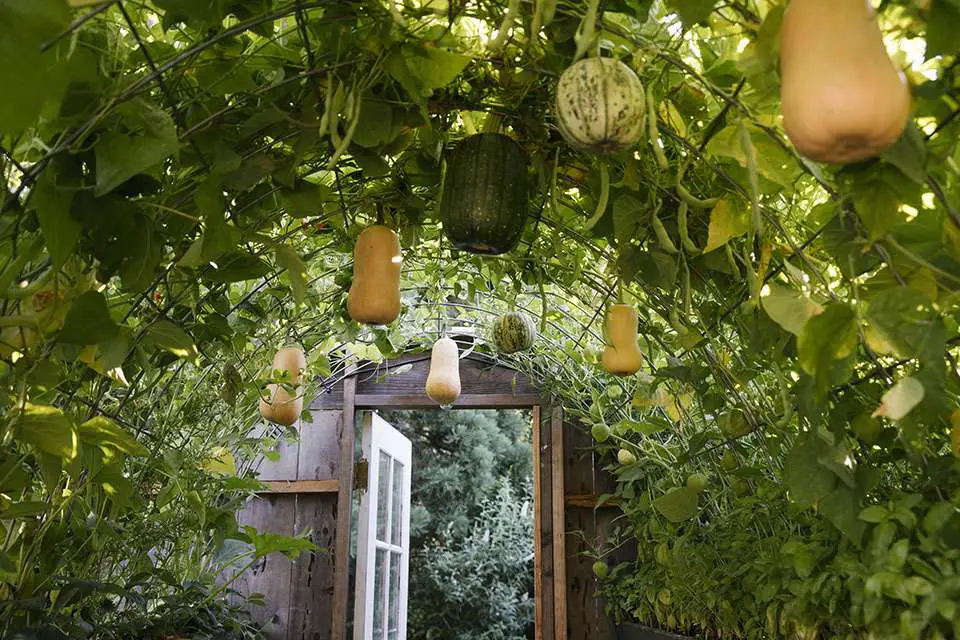
5. Provide adequate light: Butternut squash seedlings require strong light to grow properly. Place them in a sunny spot or provide supplemental artificial light using fluorescent or LED grow lights. Keep the lights on for 14-16 hours a day to simulate sunlight.
6. Maintain optimal temperature and humidity: Butternut squash seeds germinate best in temperatures around 70-85°F (21-29°C). Use a heat mat if necessary to maintain consistent warmth. Aim for a humidity level of around 60-70% to prevent drying out of the seedlings.
Following these tips and tricks will give your butternut squash seeds a strong start indoors. With proper care and attention, you’ll soon have robust and healthy seedlings ready for transplantation when the time is right.
Transplanting Butternut Squash Seedlings: Best Practices
Transplanting butternut squash seedlings is a critical step in ensuring their healthy growth and development. This process should ideally take place when the seedlings have reached a height of 2-3 inches and have developed a strong root system. Before transplanting, it is essential to prepare the soil properly by loosening it and adding organic matter such as compost to improve its fertility and drainage.
When selecting a location for transplanting, choose an area that receives full sun for at least 6-8 hours a day. Butternut squash plants thrive in warm temperatures ranging from 70-85°F (21-29°C), so it is crucial to ensure that the soil temperature has reached a minimum of 60°F (15°C) before transplanting. Additionally, make sure the soil has good drainage to prevent waterlogging, which can lead to root rot and stunted growth.
When transferring the seedlings, handle them carefully to avoid damaging the delicate roots. Dig a hole slightly larger than the root ball and gently place the seedling into the hole, making sure the soil level matches the height of the seedling’s stem. Firmly press the soil around the base of the seedling to provide stability and support. After transplanting, water the seedlings thoroughly to settle the soil and promote root establishment.
By following these best practices for transplanting butternut squash seedlings, you can give your plants the best chances of thriving in their new location. In the next section, we will explore essential watering techniques to ensure the continued health and productivity of your growing butternut squash plants.
Essential Watering Techniques for Healthy Butternut Squash Plants
To ensure the healthy growth and development of your butternut squash plants, proper watering techniques are essential. Water is crucial for the plants’ hydration, nutrient absorption, and overall health. However, overwatering can be just as detrimental as underwatering, so striking the right balance is key.
One important tip is to water your butternut squash plants deeply and infrequently. Rather than giving them frequent shallow watering, which encourages shallow root growth and can make the plants more susceptible to stress, it is best to provide a deep soak less often. This allows the water to penetrate deeper into the soil, encouraging the roots to grow deeper as they seek out moisture. A deep watering also helps prevent water loss through evaporation and encourages strong root development, which is crucial for nutrient uptake and overall plant health.
Another important aspect of watering your butternut squash plants is to avoid wetting the leaves unnecessarily. Water that sits on the foliage for too long can create a humid environment, which can promote the growth of fungal diseases. Instead, focus your watering efforts at the base of the plants or use drip irrigation to deliver water directly to the roots. This helps to maintain dry foliage and reduce the risk of disease.
By following these essential watering techniques, you can promote the health and vitality of your butternut squash plants, ensuring a bountiful harvest of delicious and nutritious squash. However, watering is just one aspect of successfully growing butternut squash. It is equally important to provide proper nutrient support, manage pest and disease issues, and understand the optimum harvesting and storage techniques. In the following sections, we will explore these topics in detail, offering valuable insights and expert advice to help you become a successful butternut squash gardener.
Providing Proper Nutrient Support to Boost Butternut Squash Growth
To achieve optimal growth and size in your butternut squash plants, providing proper nutrient support is essential. Butternut squash is a heavy feeder, requiring a rich and nutrient-dense soil to thrive. By ensuring that your plants have access to the right balance of essential nutrients, you can encourage healthy growth and increase their overall yield.
One of the key nutrients that butternut squash plants require is nitrogen. Nitrogen is vital for promoting vigorous vegetative growth and the development of lush foliage. A lack of nitrogen can result in stunted growth and reduced fruit production. To supply your plants with an adequate amount of nitrogen, consider incorporating organic matter such as well-rotted compost or aged manure into the soil before planting. You can also use a nitrogen-rich fertilizer formulated specifically for vegetable gardens.
In addition to nitrogen, butternut squash plants also require adequate amounts of phosphorus and potassium. Phosphorus is crucial for root development and overall plant health, while potassium helps promote strong stems and disease resistance. To ensure a balanced nutrient supply, use a fertilizer that contains these essential elements, preferably in a slow-release form. Applying the fertilizer according to the manufacturer’s instructions will help prevent overfertilization, which can cause nutrient imbalances and lead to plant stress.
Here is a table that shows some of the nutrients that promotes growth to a butternut squash:
| Nutrient | Role | Sources |
|---|---|---|
| Nitrogen (N) | Stimulates vegetative growth | Compost, manure, blood meal, fish emulsion, soybean meal |
| Phosphorus (P) | Promotes root and fruit development | Bone meal, rock phosphate, composted poultry manure, fish meal |
| Potassium (K) | Enhances overall plant health | Wood ash, kelp meal, greensand, granite meal, composted banana peels |
| Calcium (Ca) | Prevents blossom end rot | Gypsum, dolomitic lime, crushed eggshells, bone meal |
| Magnesium (Mg) | Essential for chlorophyll production | Epsom salt, dolomitic lime, composted manure |
| Sulfur (S) | Aids in enzyme activation | Gypsum, elemental sulfur, composted manure |
| Micronutrients (e.g., iron, zinc) | Supports various metabolic functions | Compost, seaweed extract, fish emulsion, rock dust, foliar sprays |
Remember, providing proper nutrient support is just one aspect of growing healthy butternut squash. It is crucial to consider other factors such as watering, sunlight exposure, and pest management to achieve the best results. By taking a holistic approach and addressing all the necessary requirements, you can enjoy a bountiful harvest of delicious butternut squash.
Managing Pest and Disease Issues in Butternut Squash Plants
Pest and disease issues can pose significant challenges for butternut squash plants, but with proper management, you can protect your crop and ensure a successful harvest. One common pest that affects butternut squash is the squash bug (Anasa tristis), which can cause extensive damage if not promptly controlled. These brownish-black bugs have piercing mouthparts that they use to suck the sap from the leaves, causing them to wilt and turn brown. To prevent squash bug infestations, it is crucial to regularly inspect the plants and remove any eggs or nymphs that may be present. Additionally, you can consider using insecticidal soaps or neem oil, following the instructions on the product label.
Another common pest that can plague butternut squash plants is the vine borer (Melittia cucurbitae), which lays its eggs at the base of the plant’s stem. Once the eggs hatch, the larvae tunnel into the stem, causing wilting and eventual death of the plant. To manage vine borers, it is recommended to regularly inspect the stems for entry holes and apply a biological control called Bacillus thuringiensis (Bt) on a preventive basis. Bt is a natural bacteria that specifically targets the larvae of certain pests, including vine borers, without harming beneficial insects or other organisms.
When it comes to diseases, powdery mildew (Podosphaera xanthii) is a common issue in butternut squash plants. This fungal disease appears as a white powdery coating on the leaves, eventually causing them to yellow and wither. To prevent powdery mildew, it is important to practice proper plant spacing to allow for good airflow and reduce humidity. Applying fungicides labeled for powdery mildew control can also be effective, but it is essential to follow the instructions and ensure the product is labeled for use on squash plants. Regularly monitoring your plants and promptly removing infected leaves can further prevent the spread of this disease.
By effectively managing pest and disease issues in your butternut squash plants, you can maintain healthy foliage, promote fruiting, and ultimately increase your harvest yield. Stay vigilant, use preventive measures, and employ organic and environmentally friendly control methods whenever possible to ensure the long-term health and productivity of your butternut squash crop.
Pruning and Training Butternut Squash Vines for Optimal Yield
Pruning and training butternut squash vines is a crucial step in optimizing the yield of your harvest. By properly managing the growth and structure of the vines, you can encourage better airflow, enhance sunlight exposure, and prevent diseases.
One effective technique for pruning butternut squash vines is to remove the lateral shoots that develop from the main vine. These shoots, also known as suckers, can divert valuable nutrients and energy away from the main plant. By carefully trimming these suckers, you allow the plant to focus its resources on fruit development. Additionally, pruning the vine helps to increase air circulation, which reduces the risk of fungal diseases such as powdery mildew.
To train the vines, it is recommended to use a trellis or sturdy support structure that can bear the weight of the growing squash. This not only keeps the squash fruit off the ground, minimizing the chances of rot, but also helps to prevent sprawling growth that can hinder sunlight penetration. Gently guiding the vines along the trellis ensures that the leaves and stems receive adequate sunlight, ultimately promoting healthier plant growth and more fruitful yields.
By employing these pruning and training techniques, you can optimize the growth and yield of your butternut squash plants. With proper care and attention, you will be rewarded with a bountiful harvest of delicious and nutrient-rich squash.
Recognizing the Right Time to Harvest Butternut Squash
Recognizing the Right Time to Harvest Butternut Squash
When it comes to growing butternut squash, knowing the right time to harvest is crucial to ensure optimal flavor and texture. This fall favorite reaches its peak ripeness when the skin turns a deep tan or light orange color. The stem also serves as a reliable indicator of maturity, as it should be brown and dry. To confirm if the butternut squash is ready for harvest, gently press your finger against the skin. If it feels firm and doesn’t leave an imprint, it’s a good indication that it’s time to pick.
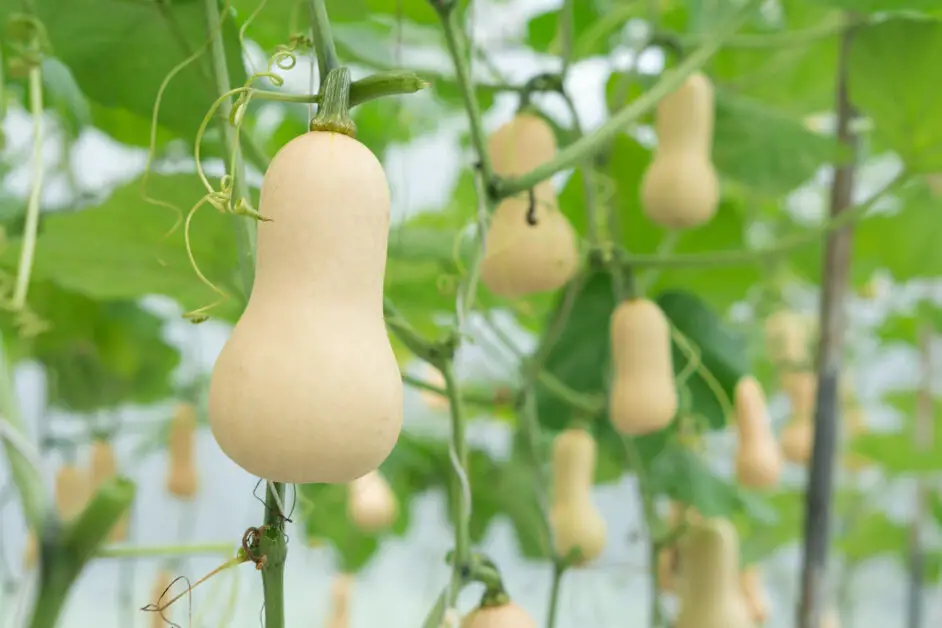
However, it’s important to note that harvesting too early can result in underdeveloped squash with a lower sugar content. On the other hand, leaving the butternut squash on the vine for too long can lead to overripeness, compromising its flavor and texture. Taking these factors into account, it’s recommended to harvest butternut squash when it’s fully mature but not overly ripe. By carefully observing the color, stem condition, and conducting a gentle press test, you’ll be able to determine the perfect time to harvest your butternut squash bounty.
Properly Harvesting and Curing Butternut Squash for Storage
Harvesting and properly curing your butternut squash is crucial in ensuring its long-term storage. To determine when your squash is ripe for harvesting, look for several indicators. First, check the skin—mature butternut squash will have a hard, tough skin that is difficult to puncture with your thumbnail. Additionally, the skin should have a deep, uniform tan color, without any green spots. Another sign of ripeness is the drying of the vine or stem attached to the squash. If the vine is dry and cracked near the stem, it’s a good indication that the squash is ready for harvest.
Once you’ve determined that your butternut squash is ready for harvest, it’s important to handle it with care to prevent any damage that could compromise its storage quality. Start by using pruning shears or a sharp knife to cut the squash from the vine, leaving a small portion of the stem intact. Avoid twisting or pulling the squash off the vine, as this can cause damage. It’s recommended to leave at least 2 inches of stem attached to the squash, as this can help prevent rot during the curing process. After harvesting, gently brush off any excess dirt, but avoid washing the squash with water, as this can increase the chances of spoilage. Overall, proper handling and harvesting techniques will help ensure that your butternut squash stays fresh and delicious for months to come.
Cooking and Enjoying Butternut Squash: Delicious Fall Recipes
When the leaves start to change and there’s a crispness in the air, it’s time to celebrate the arrival of fall with delicious butternut squash recipes. Butternut squash is a versatile vegetable that can be used in a variety of dishes, from soups and salads to casseroles and desserts. Its sweet and nutty flavor pairs perfectly with the warm spices that are reminiscent of the season. Whether you’re a seasoned chef or a novice in the kitchen, there’s a butternut squash recipe that’s sure to please your taste buds.

One popular fall favorite is butternut squash soup. This creamy and comforting dish is the perfect way to start a meal or enjoy as a light lunch. Roasting the squash before blending it with aromatic vegetables like onions, carrots, and celery enhances its natural sweetness and depth of flavor. To elevate the soup even further, add a touch of warming spices like cinnamon, nutmeg, or cumin. Serve it garnished with a sprinkle of toasted pumpkin seeds or a drizzle of tangy cream for a delightful balance of textures and flavors. Whether you prefer a smooth and velvety soup or a chunky and hearty version, there’s no denying the satisfaction that comes from savoring a bowl of butternut squash soup on a chilly autumn day. Let’s explore more delicious ways to cook and enjoy butternut squash in the following sections.
Maximizing Butternut Squash Yield: Tips for Succession Planting
Succession planting is a valuable technique that can greatly increase your butternut squash yield. By staggering your plantings, you can ensure a continuous harvest throughout the season, providing you with an abundance of this fall favorite. One of the keys to successful succession planting is planning ahead. Take into consideration the length of your growing season and the maturity time of your chosen butternut squash variety. By carefully selecting varieties with varying maturity dates, you can maximize your harvest window and enjoy a longer season of fresh, homegrown squash.
When it comes to succession planting, timing is everything. Start by sowing your first batch of butternut squash seeds indoors, around four weeks before your last frost date. Once the seedlings have established their true leaves and the risk of frost has passed, it’s time to transplant them into your garden. As you enjoy the fruits of your initial planting, prepare to sow your second batch of seeds, ensuring they will be ready for transplanting once the first batch has finished producing. Continue this process throughout the growing season, allowing for adequate spacing and considering the potential overlap in harvest time for each batch. By carefully managing your planting schedule, you can enjoy a continuous supply of delicious butternut squash, straight from your own garden.
Overcoming Common Challenges in Growing Butternut Squash
Growing butternut squash can be a rewarding experience, but it’s not without its challenges. Even experienced gardeners can face difficulties when trying to cultivate this fall favorite. Fortunately, by understanding and overcoming these common challenges, you can increase your chances of success and enjoy a bountiful harvest.
One challenge that gardeners often encounter is poor germination rates. Butternut squash seeds can be stubborn to sprout, requiring specific conditions for optimal growth. To overcome this challenge, it’s essential to start your seeds indoors before transplanting them outdoors. This allows you to control the temperature, moisture, and light levels, giving the seeds the ideal conditions they need to germinate successfully. Additionally, soaking the seeds in water overnight before planting can help expedite the germination process. By taking these extra precautions, you can increase your chances of high germination rates and ensure a strong start for your butternut squash plants.
Another common challenge in growing butternut squash is managing pest and disease issues. These plants can be susceptible to a variety of pests, including aphids, squash bugs, and vine borers. Fungal diseases like powdery mildew can also wreak havoc on your plants if not addressed promptly. To combat these challenges, it’s essential to implement preventive measures such as regular inspection and cleaning, crop rotation, and maintaining good airflow around the plants. If pests or diseases do strike, organic treatments such as neem oil or insecticidal soap can provide effective control. Remember to follow the instructions carefully and monitor the plants closely to ensure the best results. With diligent attention and proactive management, you can overcome these common challenges and enjoy healthy, flourishing butternut squash plants.
Watch the video to get the complete guide to grow butternut squash.
Sharing Your Butternut Squash
As a passionate gardener, you’ve successfully grown a bounty of beautiful butternut squash in your garden. Now, it’s time to share the fruits of your labor with others! Butternut squash is a versatile and nutritious vegetable, and there are many ways to share it with your friends, family, and community.
One great way to share your butternut squash is by hosting a fall harvest party. Invite your loved ones over to celebrate the season and enjoy delicious dishes featuring your homegrown squash. Whether it’s a roasted butternut squash soup, a savory butternut squash and sage risotto, or a sweet and creamy butternut squash pie, your guests are sure to be impressed by the flavors and freshness of the vegetable straight from your garden.
Another way to spread the joy of butternut squash is by donating your surplus to local food banks or community organizations. Many people in need would greatly appreciate the nutritious addition to their meals. Contact your nearest food bank or community center to find out if they accept fresh produce donations and arrange a drop-off or pick-up time. It’s a wonderful way to contribute to your community and help those less fortunate enjoy the benefits of fresh, homegrown produce.
Remember, when sharing your butternut squash, it’s important to handle and store it properly to maintain its quality and flavor. Store the squash in a cool, dry place away from direct sunlight. If you have a surplus, consider freezing or canning some for later use, ensuring none of your hard work goes to waste.
So go ahead and spread the love of butternut squash by hosting a harvest party or donating to those in need. Your delicious and nutritious homegrown squash will surely bring smiles to the faces of those who have the pleasure of enjoying it.
Can I share my butternut squash with friends and family?
Yes, you can definitely share your butternut squash with friends and family. It is a great way to spread the joy of your harvest and enjoy the fruits of your labor together.
How can I properly store and transport butternut squash when sharing?
To store butternut squash, choose ones with intact skin and store them in a cool, dry place with good air circulation. When transporting, place them in a sturdy container or wrap them in newspaper to prevent bruising.
Can I freeze butternut squash to share later?
Yes, you can freeze butternut squash to share later. Peel and chop the squash into desired pieces, blanch them in boiling water for a few minutes, cool them quickly in ice water, and then pack them in freezer-safe bags or containers.
Are there any special precautions I should take when sharing butternut squash with others?
When sharing butternut squash, it is important to wash them thoroughly before cutting or cooking. Also, if anyone has allergies or dietary restrictions, it is good to inform them about the ingredients used in any recipes you share.
Can I share my butternut squash seeds with others for planting?
Yes, sharing butternut squash seeds with others for planting is a wonderful idea. Make sure to properly dry and store the seeds in airtight containers before sharing, and provide planting instructions if needed.
Are there any specific safety tips I should keep in mind when sharing butternut squash?
When sharing butternut squash, always handle them with clean hands and use clean utensils and cutting boards. Also, ensure that the squash is properly cooked before sharing any cooked dishes to prevent foodborne illnesses.
What are some creative ways to share butternut squash with others?
Apart from sharing whole butternut squash or cooked dishes, you can also create homemade butternut squash preserves, soups, or sauces and share them in jars or containers. Another idea is to host a butternut squash tasting event where everyone brings a different dish featuring the squash.
Can I share my butternut squash with local food banks or community organizations?
Absolutely! Many food banks and community organizations gladly accept fresh produce donations, including butternut squash. Contact your local food bank or community center to inquire about their donation policies and any specific requirements.
How long can butternut squash be stored before it goes bad?
Properly stored butternut squash can last for several months. If stored in a cool, dry place with good air circulation, it can stay fresh for up to 3-6 months.
Are there any specific ways to package butternut squash when sharing them as gifts?
To package butternut squash as gifts, you can wrap them individually in decorative tissue paper or burlap, tie them with a colorful ribbon, and attach a small card with a personalized message. This adds a special touch to your gift.

